Selective Generation of Lamb Wave Modes in a Finite-Width Plate by Angle-Beam Excitation Method
Abstract
1. Introduction
2. Lamb Wave Propagation Characteristics in A Finite-Width Plate
2.1. The SAFE Technique
2.2. Dispersion Curves And Wave Structures
3. Angle-Beam Excitation Method for Selective Generation of Lamb Wave Mode
3.1. Selective Excitation Method Concept
3.2. Wedge Designs
3.3. Single and Dual Wedge Techniques
4. FEM Simulation for Selective Generation of Lamb Wave Mode
5. Experiments
5.1. Experimental Setup
5.2. Measurement Results
6. Conclusions
Author Contributions
Funding
Acknowledgments
Conflicts of Interest
References
- Cawley, P.; Alleyne, D.N. The use of Lamb waves for the long range inspection of large structures. Ultrasonics 1996, 34, 287–290. [Google Scholar] [CrossRef]
- Alleyne, D.N.; Cawley, P. Long range propagation of Lamb waves in chemical plant pipework. Mater. Eval. 1997, 55, 5504–5508. [Google Scholar]
- Taiky, A.E.; Kitano, C.; Higuti, R.T.; Granja, S.C.G.; Prado, V.T.; Elvira, L.; Martinez-Graullera, O. Ultrasound imaging of immersed plates using higher-order Lamb modes at their low attenuation frequency bands. Mech. Syst. Signal Process. 2017, 96, 321–332. [Google Scholar] [CrossRef]
- Kauffmann, P.; Ploix, M.-A.; Chaix, J.-F.; Potel, C.; Gueudre, C.; Corneloup, G.; Baque, F. Multi-modal leaky Lamb waves in two parallel and immersed plates: Theoretical considerations, simulations, and measurements. J. Acoust. Soc. Am. 2019, 145, 1018–1030. [Google Scholar] [CrossRef] [PubMed]
- Joo, Y.-S.; Park, C.-G.; Lee, J.-H.; Kim, J.-B. Development of ultrasonic waveguide sensor for under-sodium inspection in a sodium-cooled fast reactor. NDT&E Int. 2011, 44, 239–246. [Google Scholar]
- Ditri, J.; Rose, J.L.; Chen, G. Mode selection criteria for defect detection optimization using Lamb waves. In Proceedings of the 18th Annual Review of Progress in Quantitative NDE; Thompson, D.O., Chimenti, D.E., Eds.; Plenum Press: New York, NY, USA, 1992; Volume 11, pp. 2109–2115. [Google Scholar]
- Gao, H.; Rose, J.L. Goodness dispersion curves for ultrasonic guided wave based SHM: A sample problem in corrosion monitoring. Aeronaut. J. R. Aeronaut. Soc. 2010, 114, 49–56. [Google Scholar] [CrossRef]
- Gao, H.; Rose, J.L. Ice detection and classification on an aircraft wing with ultrasonic shear horizontal guided waves. IEEE Trans. Ultrason. Ferroelectr. Freq. Control. 2009, 56, 334–344. [Google Scholar] [PubMed]
- Cegla, F.B.; Cawley, P.; Allin, J.; Davies, J. High temperature(>500 °C) wall thickness monitoring using dry coupled ultrasonic waveguide transducer. IEEE Trans. Ultrason. Ferroelectr. Freq. Control. 2011, 58, 156–167. [Google Scholar] [CrossRef] [PubMed]
- Sun, F.; Sun., Z.; Chen, Q.; Murayama, R.; Nishino, H. Mode conversion behavior of guided wave in a pipe inspection system based on a long waveguide. Sensors 2016, 16, 1737. [Google Scholar] [CrossRef] [PubMed]
- Joo, Y.-S.; Bae, J.-H.; Kim, J.-B.; Kim, J.-Y. Effects of beryllium coating layer on performance of the ultrasonic waveguide sensor. Ultrasonics 2013, 53, 387–395. [Google Scholar] [CrossRef] [PubMed]
- Kim, H.-W.; Joo, Y.-S.; Park, C.-G.; Kim, J.-B.; Bae, J.-H. Ultrasonic imaging in hot liquid sodium using a plate-type ultrasonic waveguide sensor. J. Nondestruct. Eval. 2014, 33, 676–683. [Google Scholar] [CrossRef]
- Duan, W.; Niu, X.; Gan, T.-H.; Kanfoud, J.; Chen, H.-P. A numerical study on the excitation of guided waves in rectangular plates using multiple point sources. Metal 2017, 7, 552. [Google Scholar] [CrossRef]
- Serey, V.; Quaegebeur, N.; Micheau, P.; Masson, P.; Castaings, M.; Renier, M. Selective generation of ultrasonic guided waves in a bi-dimensional waveguide. SHM 2018, 1–13. [Google Scholar] [CrossRef]
- Morse, R.W. The velocity of compressional waves in rods of rectangular cross section. J. Acoust. Soc. Am. 1950, 22, 219–223. [Google Scholar] [CrossRef]
- Mindlin, R.D.; Fox, E.A. Vibrations and waves in elastic bars of rectangular cross section. Trans. ASME J. Appl. Mech. 1960, 27, 152–158. [Google Scholar] [CrossRef]
- Krushynska, A.A.; Meleshko, V.V. Normal waves in elastic bars of rectangular cross section. J. Acoust. Soc. Am. 2011, 129, 1324–1335. [Google Scholar] [CrossRef] [PubMed]
- Hayashi, T.; Inoue, D. Calculation of leaky Lamb waves with a semi-analytical finite element. Ultrasonics 2014, 54, 1460–1469. [Google Scholar] [CrossRef] [PubMed]
- Inoue, D.; Hayashi, T. Transient analysis of leaky Lamb waves with a semi-analytical finite element method. Ultrasonics 2015, 62, 80–88. [Google Scholar] [CrossRef] [PubMed]
- Hayashi, T.; Song, W.-J.; Rose, J.L. Guided wave dispersion curves for a bar with an arbitrary cross-section, a rod and rail example. Ultrasonics 2003, 41, 175–183. [Google Scholar] [CrossRef]
- Hakoda, C.; Rose, J.; Shokouhi, P.; Lissenden, C. Using Floquet periodicity to easily calculate dispersion curves and wave structures of homogeneous waveguides. In 44th Annual Review of Progress in Quantitative NDE; Chimenti, D.E., Bond, L.J., Eds.; Springer: New York, NY, USA, 2017; Volume 37, pp. 020016-1–020016-10. [Google Scholar]
- Groth, E.B.; Iturrioz, I.; Clarke, T.G.R. The dispersion curve applied in guided wave propagation in prismatic rods. Lat. Am. J. Solids Struct. 2018, 15, 1–27. [Google Scholar] [CrossRef]



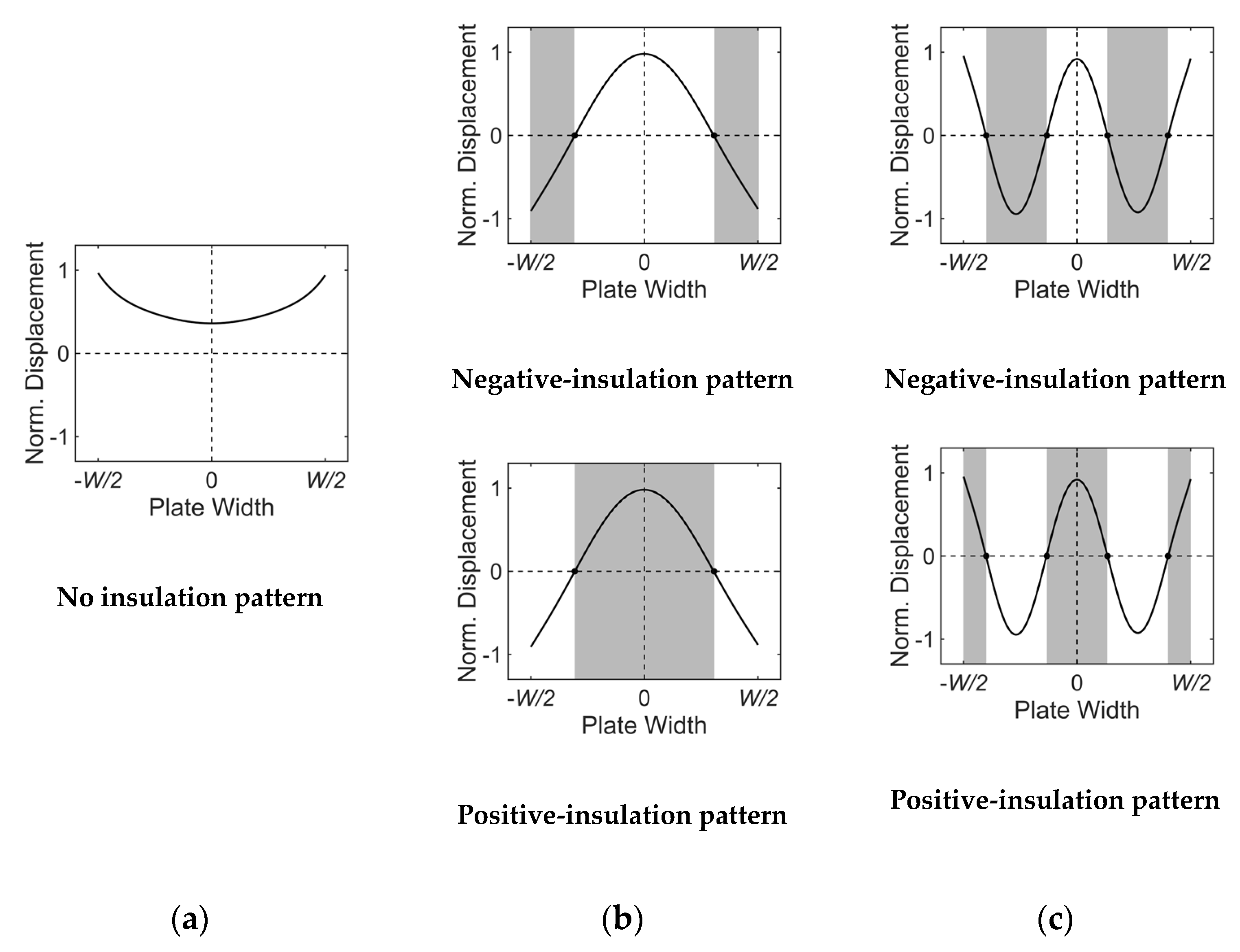



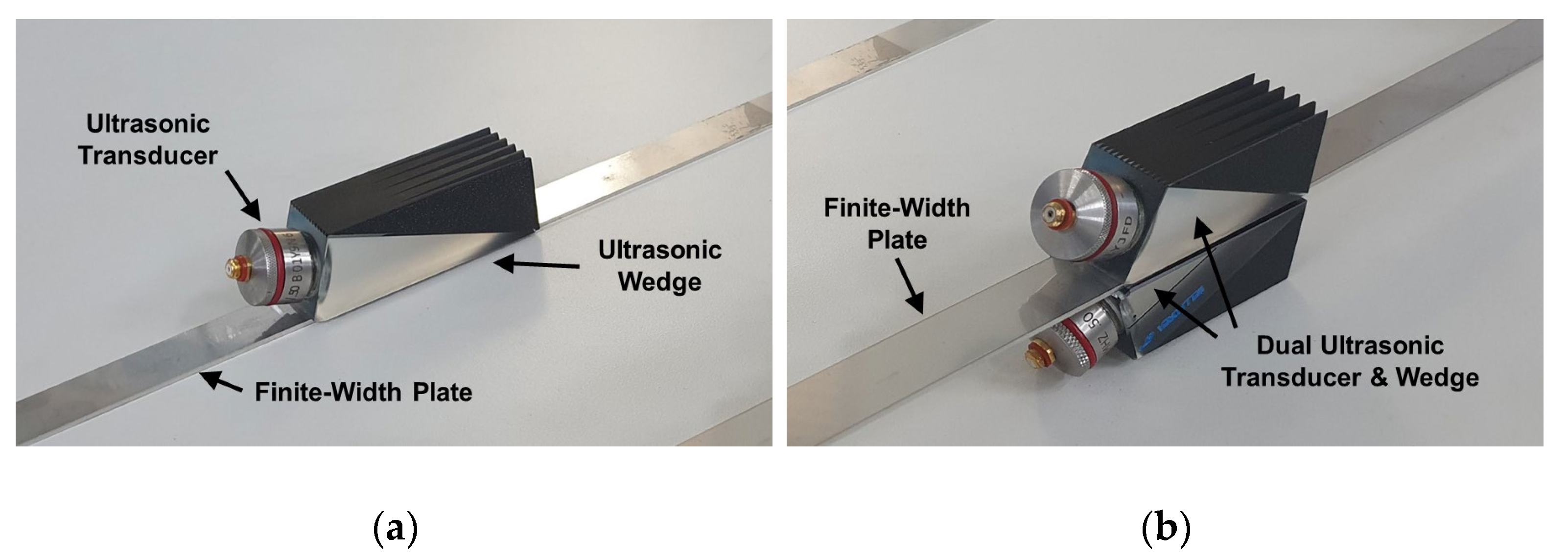

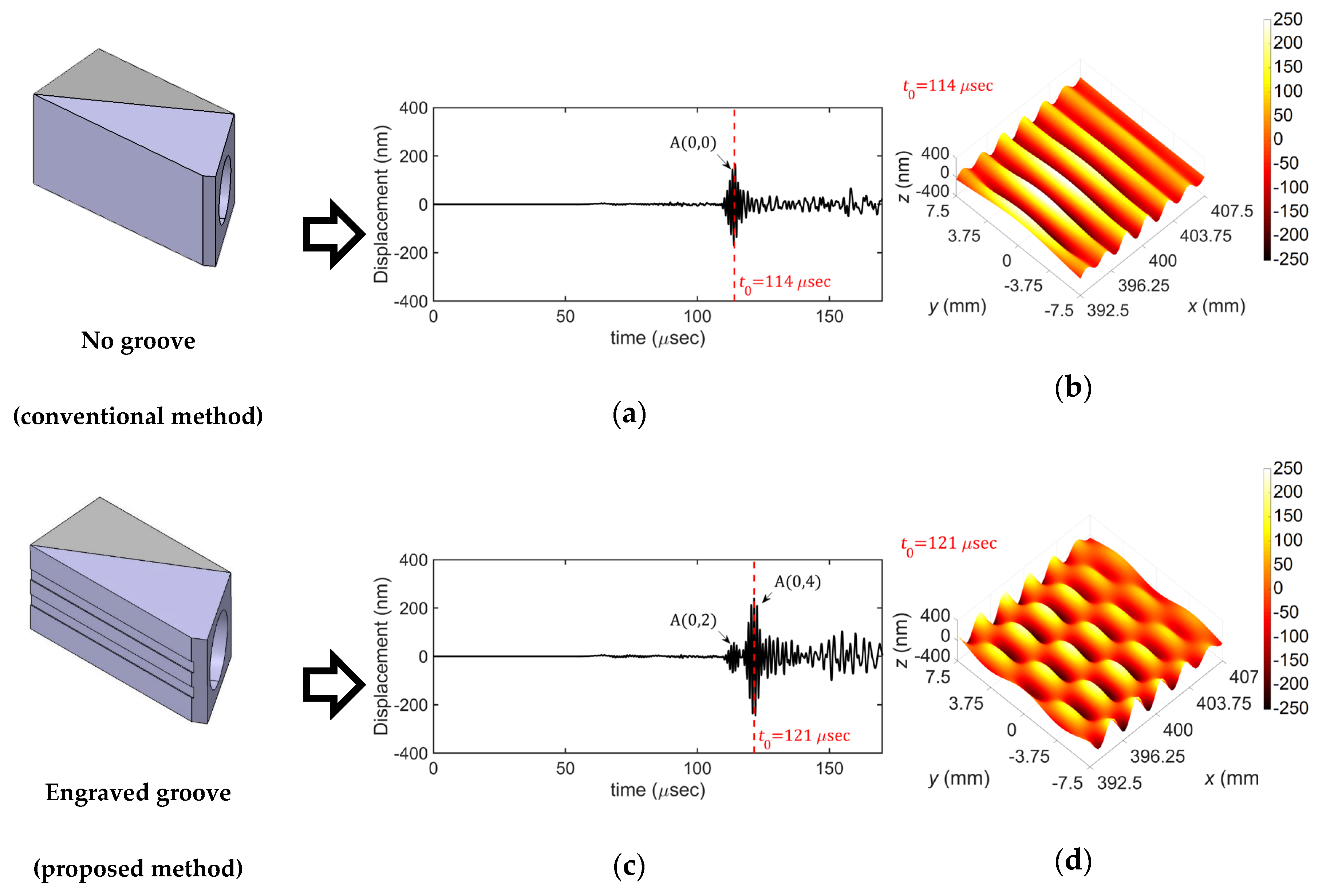

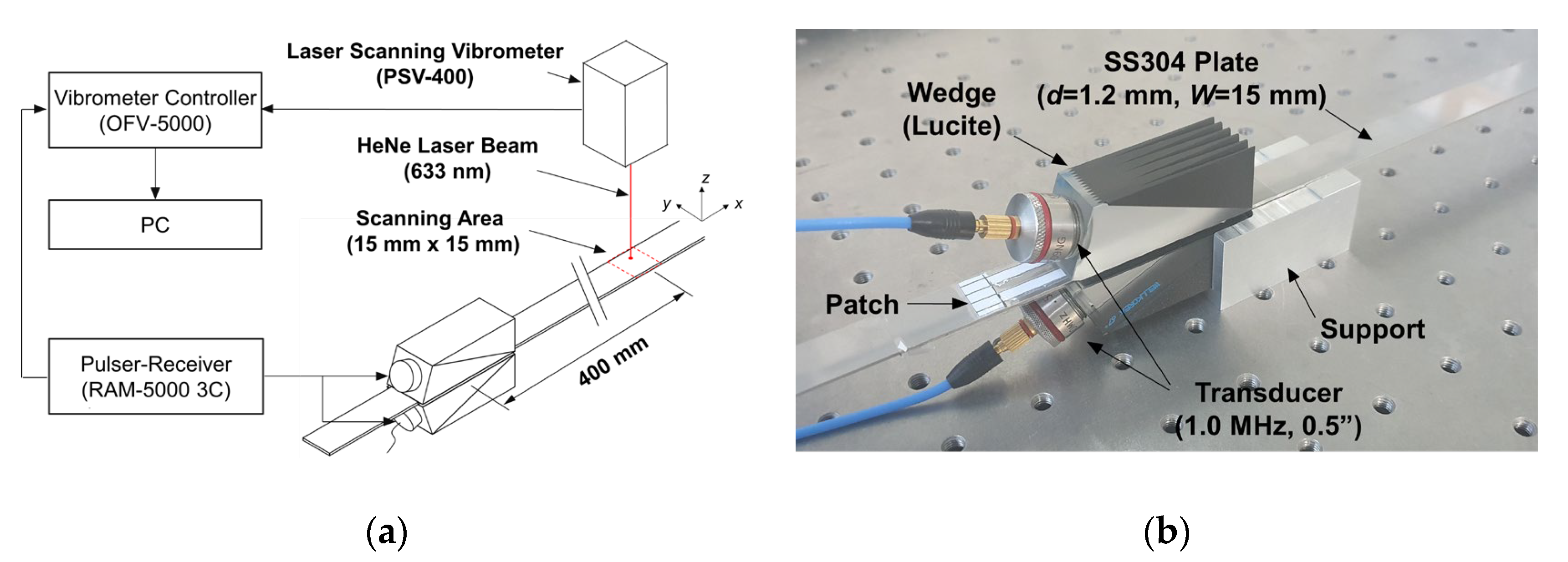
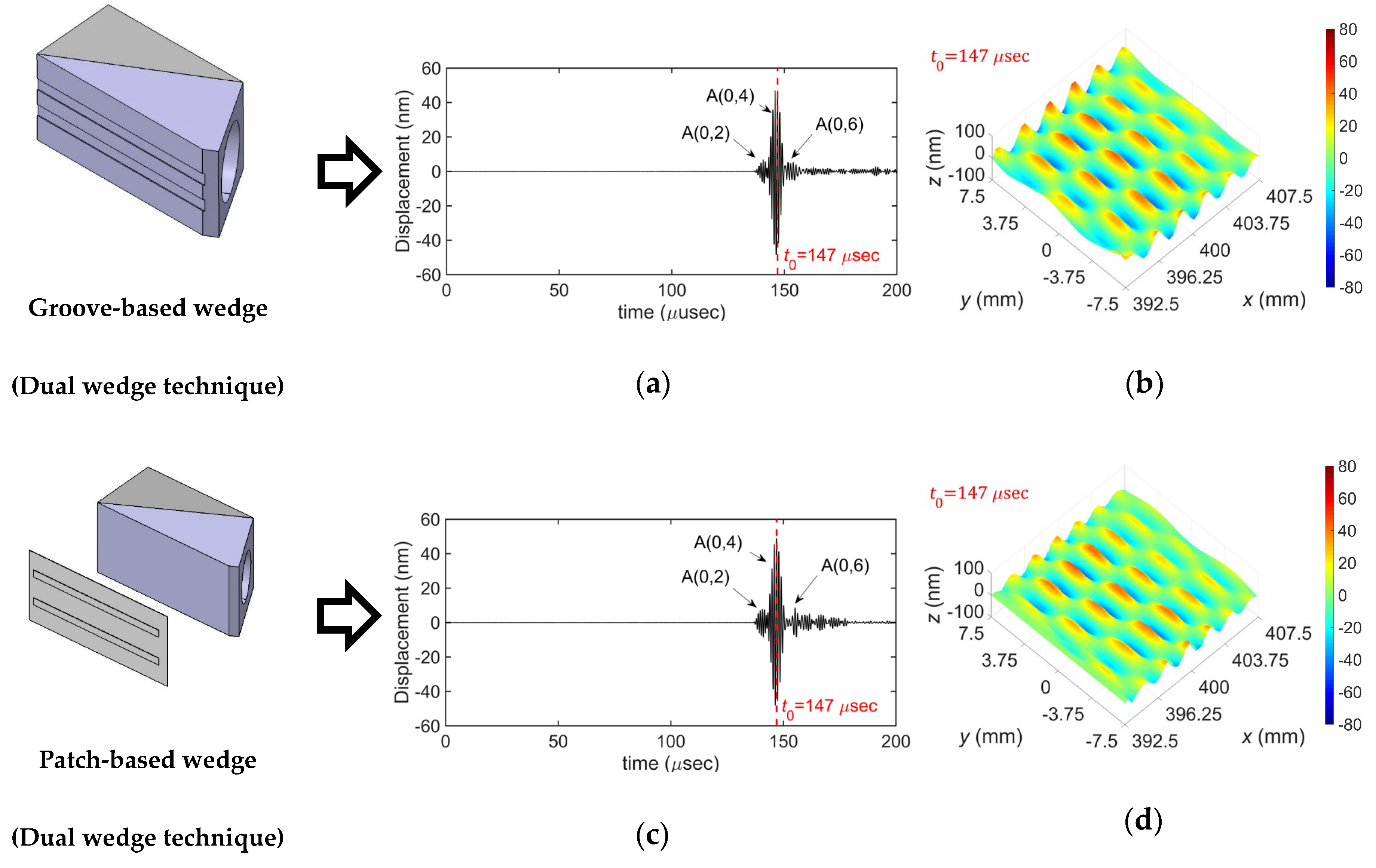


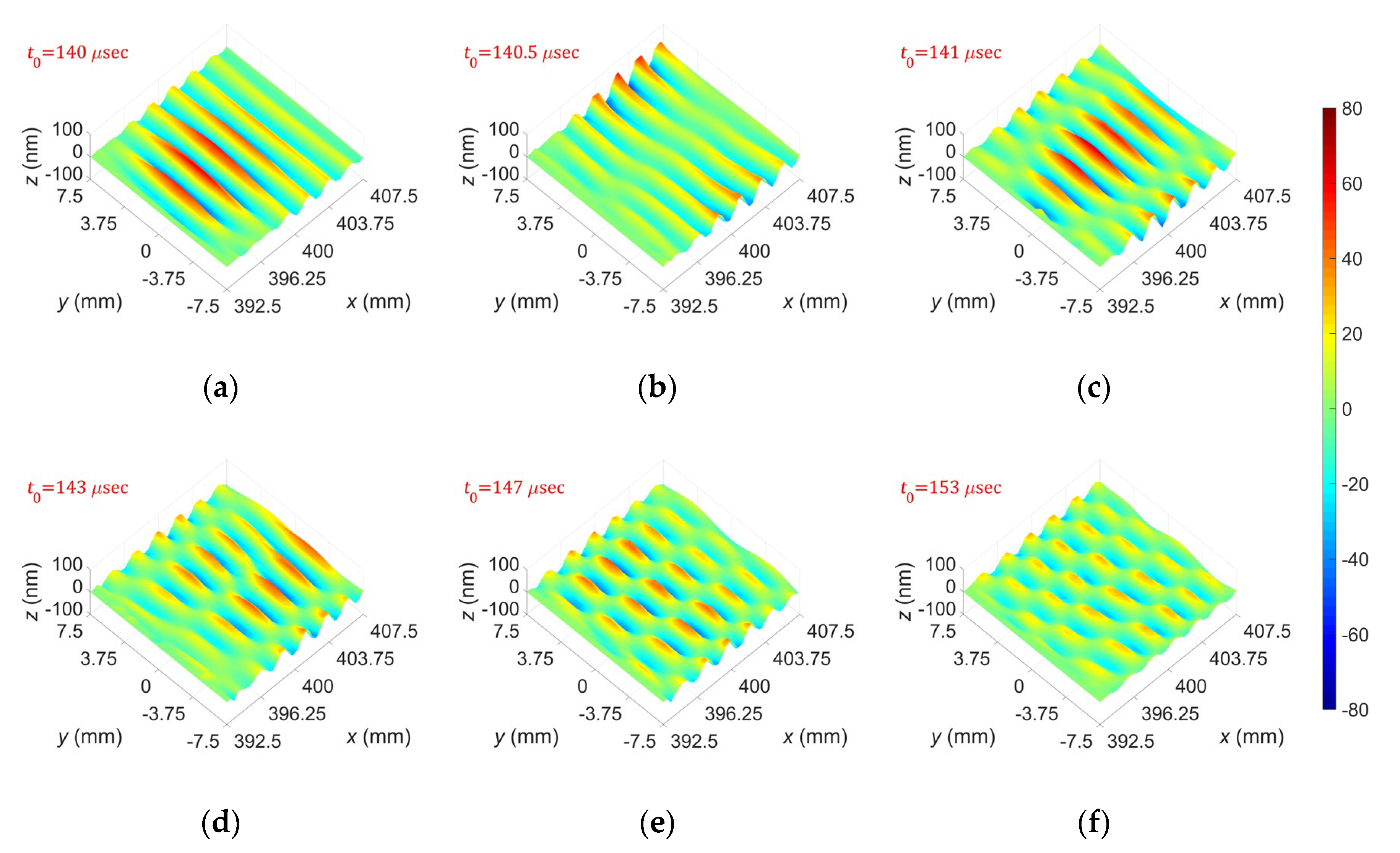
© 2020 by the authors. Licensee MDPI, Basel, Switzerland. This article is an open access article distributed under the terms and conditions of the Creative Commons Attribution (CC BY) license (http://creativecommons.org/licenses/by/4.0/).
Share and Cite
Park, S.-J.; Joo, Y.-S.; Kim, H.-W.; Kim, S.-K. Selective Generation of Lamb Wave Modes in a Finite-Width Plate by Angle-Beam Excitation Method. Sensors 2020, 20, 3868. https://doi.org/10.3390/s20143868
Park S-J, Joo Y-S, Kim H-W, Kim S-K. Selective Generation of Lamb Wave Modes in a Finite-Width Plate by Angle-Beam Excitation Method. Sensors. 2020; 20(14):3868. https://doi.org/10.3390/s20143868
Chicago/Turabian StylePark, Sang-Jin, Young-Sang Joo, Hoe-Woong Kim, and Sung-Kyun Kim. 2020. "Selective Generation of Lamb Wave Modes in a Finite-Width Plate by Angle-Beam Excitation Method" Sensors 20, no. 14: 3868. https://doi.org/10.3390/s20143868
APA StylePark, S.-J., Joo, Y.-S., Kim, H.-W., & Kim, S.-K. (2020). Selective Generation of Lamb Wave Modes in a Finite-Width Plate by Angle-Beam Excitation Method. Sensors, 20(14), 3868. https://doi.org/10.3390/s20143868




